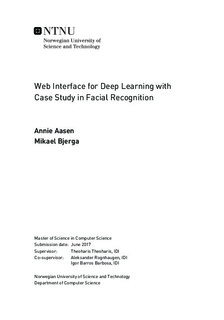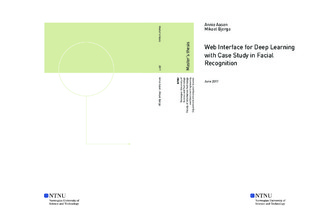| dc.description.abstract | With the recent advancements in computational power, artificial neural networks are once again on the rise. However, the increase in depth and complexity further complicates researchers' ability to make sense of a networks' behaviour. To that end, a number of visualization techniques have been developed, aiming to improve the understanding of artificial neural networks. Through visualization, researchers can gain insight into the inner workings of their networks. The images allow for easier identification of limitations and weaknesses, that can further lead to suggestions on improvements. Unfortunately, there exists a limited number of tools to facilitate the creation of such visualizations. This thesis presents a visualization tool that utilizes data produced by a network during training, to create visualizations using well-established visualization techniques. The main objective of the tool is to provide easy access to useful visualizations that can aid in understanding artificial neural networks, through a convenient API and web interface.
In this thesis, we have studied a number of visualization techniques to be implemented in our tool. We have also reviewed existing visualization tools for various machine learning libraries, to identify gaps in the offered options. To extend the options, we have implemented a visualization tool for Keras that combines the management of networks with advanced, real-time visualizations. To demonstrate the tool's capabilities, we include and interpret the visualizations created from two example networks.
In addition to the implemented visualization tool, the thesis also presents a case study in face recognition. The area of face recognition research continues to push boundaries, but still face difficulties with recognition in unconstrained environments. Obstacles like image quality, pose, illumination, and expressions present many challenges. While artificial neural networks have enjoyed much success in the field of face recognition, they still show room for improvement.
The thesis presents a novel method for improving face recognition systems using artificial neural networks, that utilizes information available in facial expressions instead of trying to overcome expressions through invariance. The case study examines three separate network architecture approaches: one with no utilization of expression information, one with an additional expression input, and one with an additional expression output. Examining their performance determined that the networks with an additional expression input performed better than their baseline counterparts. However, the networks with an additional expression output performed overall worse than the baseline networks. The findings indicate that the proposed extra input approach has further research appeal. | |

